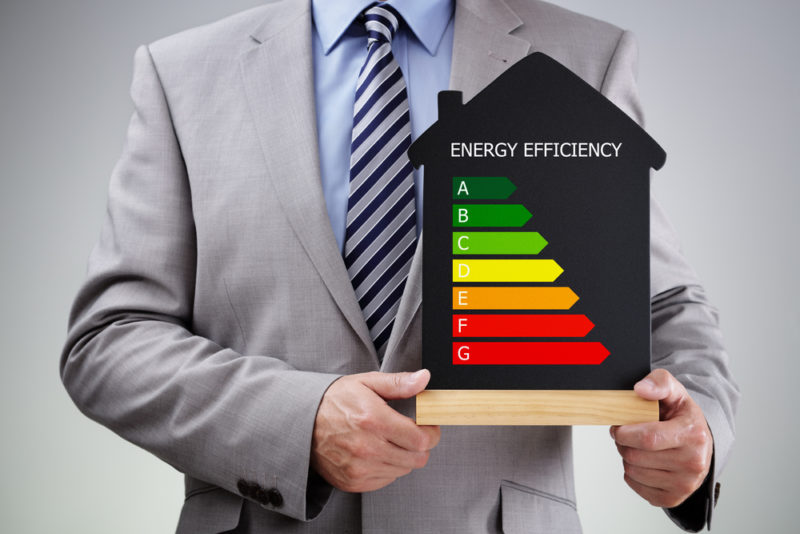
What A SEER Rating Is & The 2023 HVAC Efficiency Standards
What is a SEER Rating?
Step one in understanding energy efficient air conditioners is understanding what a SEER rating is. SEER stands for Seasonal Energy Efficiency Ratio, and is a rating for HVAC units that measures energy efficiency.
Prior to using the SEER rating, the energy efficiency of central air conditioners, and other HVAC systems, was simply measured on output vs energy usage. However, it became clear to regulators that the old method wasn’t accurately capturing energy usage in a way that mimicked real-world scenarios. SEER, first established in 1992, was introduced to take seasonality into consideration when measuring the efficiency of an HVAC system.
The Environmental Protection Agency used the SEER rating system to set minimum efficiency standards for central air conditioners and other HVAC systems. In 2023, SEER minimums have changed, and as you’ll soon find out, these updates can make a big difference when choosing a new energy-saving system for your home.
For a more in-depth look at how the 2023 SEER rating changes impact homeowners, check out this blog post by the team at Gervais Mechanical, one of the top companies for HVAC installation in Newton, MA.

The Benefits of Having an Energy-Efficient Air Conditioner
Energy efficiency isn’t a new term. You’re probably familiar with the Energy Star sticker found on many home appliances, which can be an easy way to spot an energy-efficient unit. However, there’s a lot more to be said about efficiency. Contrary to popular belief, a simple Energy Star sticker doesn’t always mean that the air conditioning unit you’re looking at is one of the most energy-efficient models available.
Now that you know what a SEER rating is, you might be wondering how you can determine the SEER rating of your energy efficient air conditioner. The SEER rating can be found either directly on your unit near the serial number, or in its energy guide. The energy guide is that yellow tag you’ve seen on many energy efficient air conditioners. With a clear numerical rating system, you can use the rating to learn exactly how much energy your air conditioner is using, and better yet, exactly how much money you’re spending for it to run. Find out more here on exactly how to do that calculation and what results might look like when you upgrade to a more energy-efficient air conditioner.
Clearly, the more energy-efficient your central air conditioning unit is, the less you’re spending on your utility bills. With SEER, the higher the SEER rating, the more energy savings there are. An energy-efficient air conditioner that is rated a 14 SEER or above is considered very energy efficient and can save you thousands in utility costs over a cooling season.
Just as friendly as they are to your wallet, energy efficient air conditioners help the environment in great ways. With less usage of fossil fuels and lower carbon emissions, mother earth will be thanking you when you make the switch to a high SEER energy-efficient air conditioner.
2023 HVAC Efficiency Standards (including the 2023 SEER Change)
As the federal government continues to examine ways to lower carbon emissions and overall energy usage in the United States, it has identified that there were still some gaps in the SEER rating methodology introduced in 1992. The newest 2023 SEER HVAC efficiency standards have gone into effect, forcing HVAC system manufacturers to undergo an even more rigorous testing process to evaluate energy efficiency. The updated version is referred to as SEER2.
This 2023 SEER change also raised the minimum energy efficiency rating for newly manufactured central air conditioners and, in Southern states, newly installed units. These testing standards and minimums don’t just apply to central air conditioners either. Heat pumps and ductless mini-splits are also subject to minimum SEER2 ratings, and other heating systems are rated using a methodology called Heating Seasonal Performance Factor, or HSPF2.
It’s important to know that SEER2 is typically reserved for central HVAC systems, not wall or window units. Because they are portable and aren’t usually connected to a central home thermostat, window units are measured using the EER2 rating which doesn’t account for seasonality.

Incentives and Rebates for Energy Efficiency
Beyond utility bill savings and your personal contribution to reducing climate change, there are also government incentives for upgrading to a high SEER-rated energy-efficient air conditioner. Along with the 2023 SEER change for manufacturers, the federal government is promoting energy efficiency by offering tax credits for anyone who purchases a unit with a SEER rating of 16 or higher.
In addition, in the state of Massachusetts, the MassSave program offers rebates, special loans, and even instant discounts on certain HVAC systems. With thousands of dollars through government energy efficiency programs, and long-term utility bill savings, there are many incentives for upgrading to a SEER energy-saving system.
How to Choose an Energy Efficient Air Conditioner
There’s a lot more to dive into when it comes to the SEER rating methodology and the newly enacted 2023 HVAC energy efficiency standards. If you’re looking locally for a new unit, Gervais Mechanical’s HVAC contractors are experts in how this legislation changes your options for central air conditioners.




